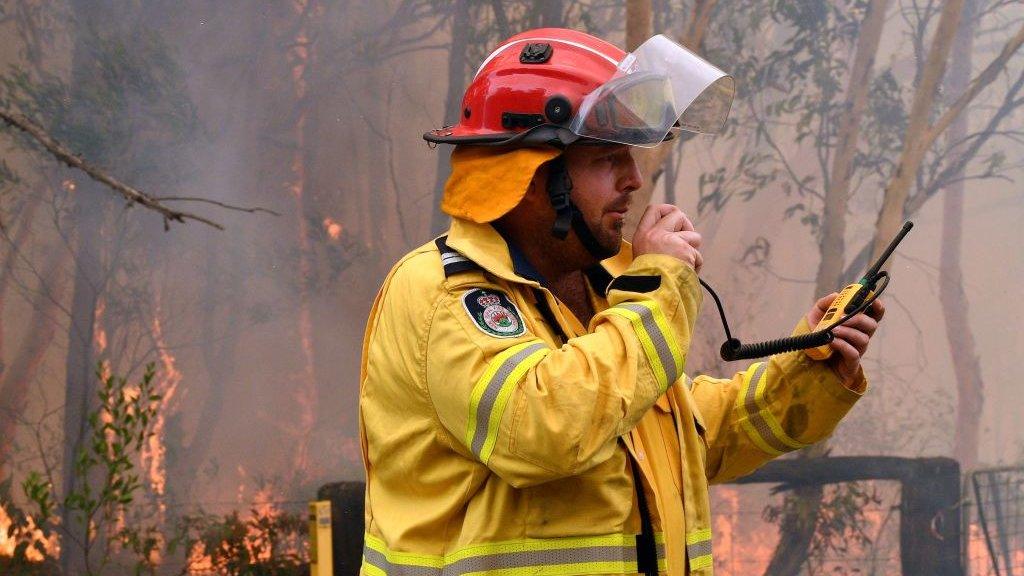Australia fires: What's being done to fight the flames?
- Published
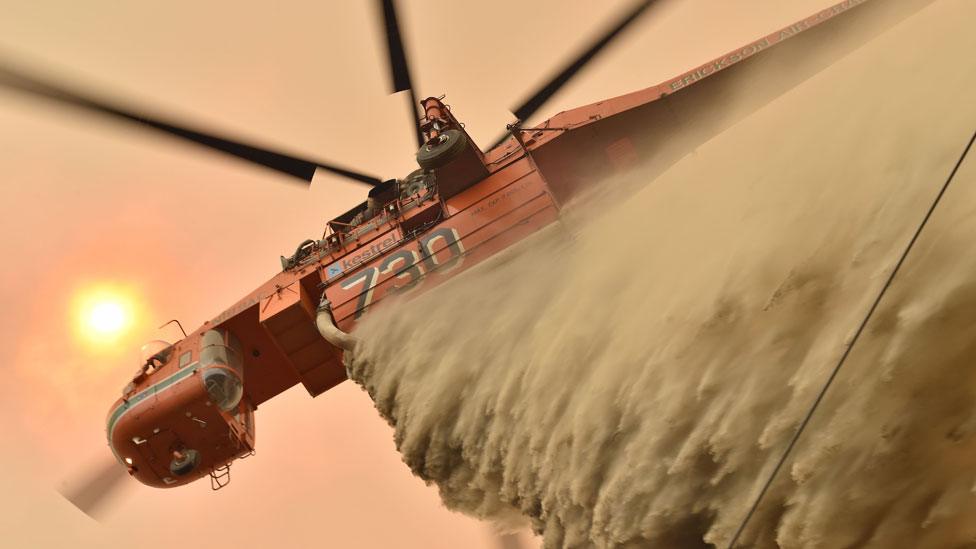
Large parts of Australia have been devastated by the worst wildfires the country has seen in decades, with huge blazes tearing through bush, woodland and national parks.
Record-breaking temperatures and months of drought have helped the fires burn an estimated 10 million hectares (100,000 sq km) of land since 1 July.
What are the Australian authorities doing to stop the fires and could anything have been done to prevent them?
Fighting the fires is a huge and dangerous task
Thousands of firefighters are still battling blazes across Australia - ranging in size from small fires to infernos burning across hectares of land.
Entire towns have been engulfed and residents across several states have lost their homes. At least 30 people have died.

Sorry, your browser cannot display this map
Over the last few months, state and federal authorities have been working together to try to stem the spread of the fires. While they have managed to contain some within a matter of days, the biggest blazes have been burning for months.
But task of quelling the flames has been a dangerous one, with four firefighters and three US crew members of an air tanker losing their lives.
Officials lost contact with a C-130 Hercules water-bombing plane on Thursday as it crashed in the Snowy Mountains in the state of New South Wales (NSW). The cause of the crash is not yet known.
Although recent cooler conditions and rain have brought some respite to operations, more than 80 fires are still burning in NSW.
Hot and windy conditions are forecast to return this week.

Many people are involved in the battle
At least 3,700 firefighters have been on the ground at any one time across the country during the worst periods, according to the country's state fire services. Most have been in the worst-hit states of New South Wales (NSW) and Victoria.


When fires have been at their worst, about 2,700 firefighters have been battling blazes at any one time in NSW.
But in recent days, more than 1,100 firefighters have been on the ground, the NSW Rural Fire Service says.
Ben Shepherd, from the service, said his colleagues had dealt with 4.2m hectares of burning land this season, compared with the typical 300,000 hectares.
"It's been an incredibly long campaign," he said.
Fire crews across the country have been joined by 3,000 army, navy and air force reservists who are assisting with search and rescue and clean-up efforts.
Further support has come from the US, Canada, and New Zealand, who have sent additional teams and equipment to help.

They're using a lot of kit
Fire crews are using a combination of aircraft and land-based equipment to fight the fires.
NSW Rural Fire Service says it has about 100 aircraft in the skies every day when the fires are bad, while Victoria Country Fire Authority says it has more than 60.
They include helicopters, fixed-wing aircraft and larger air-tankers, most of which can be used to "firebomb" water onto fires or drop retardant from the sky above.
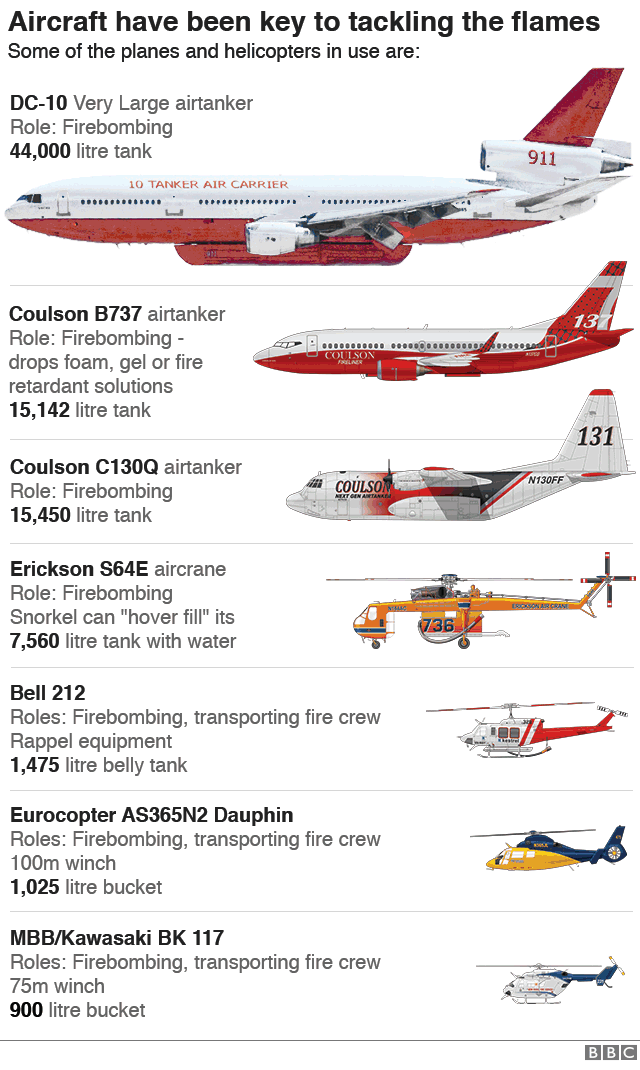

Overall, more than 500 aircraft are available for firefighting across Australia,, external according to the National Aerial Firefighting Centre, which has its own fleet of about 130 aircraft ready to help boost a state's response when required.
Prime Minister Scott Morrison also committed $14m to leasing firefighting aircraft from overseas.


On the ground, teams are also using firefighting trucks and "heavy plant" equipment, such as bulldozers and excavators, in order to move earth, clear areas of debris and create "firebreaks" - gaps in vegetation that help slow the advance of flames.
NSW Rural Fire Service says it has more than 750 vehicles on the ground when fires are at their worst.
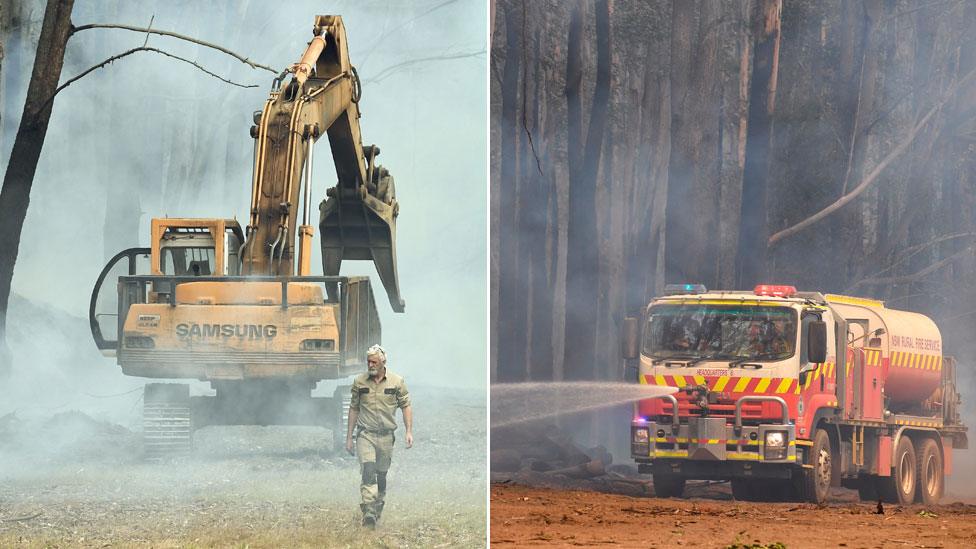
Military aircraft and navy cruisers are also being used alongside Australian fire service kit.

But the government has faced criticism for its response
The prime minister - a keen supporter of the country's coal industry - has faced fierce criticism over his apparent failure to anticipate the crisis, his slow response to the disaster and his reluctance to accept a link between the bushfires and climate change.

Mr Morrison was forced to apologise for going on a family holiday to Hawaii last month as the crisis escalated and he has been heckled by locals in NSW and Victoria.
In response, the Australian leader has expressed regret over his handling of the crisis and said he would seek a royal commission review - a type of public inquiry - into the country's response. He has also promised A$2bn ($1.4bn; £1.1bn) in aid to help the country recover
But the prime minister is being urged to do more to cut Australia's carbon emissions and tackle climate change, which is seeing the country's average temperatures rise.
The latest figures from Australia's Bureau of Meteorology show 2019 was the country's hottest and driest year on record, external.
The conditions were caused by a climate phenomenon called a positive Indian Ocean Dipole (IOD), which was unusually strong, a rare Sudden Stratospheric Warming event,, external which pushed weather systems northward, as well as climate change, the bureau said.
Last year's annual mean temperature was 1.52 degrees Celsius above the 1961-1990 average of 21.8C - higher than the previous record of 1.33 degrees Celsius in 2013.
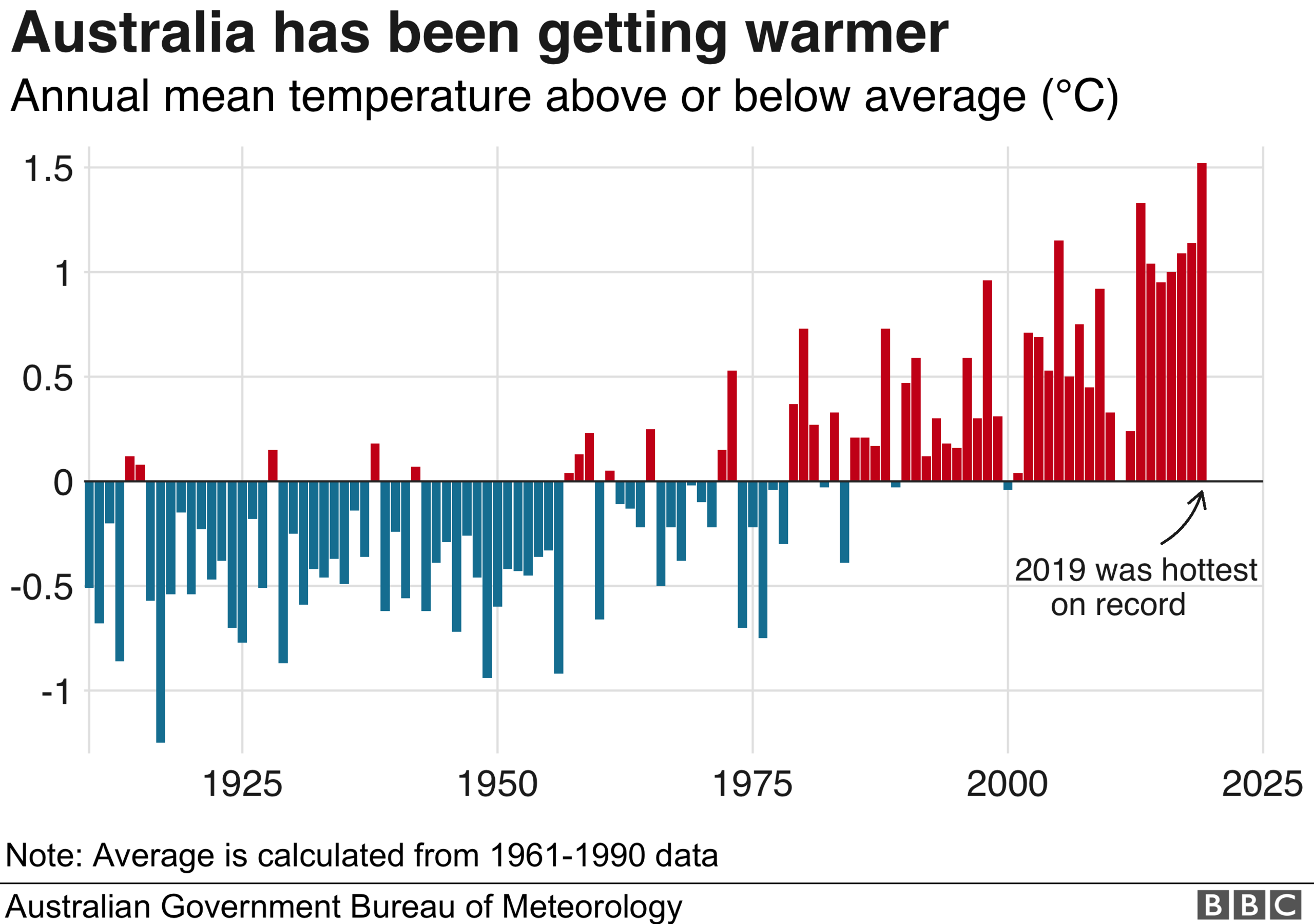
Australia's state of the climate report,, external published last year, warned that warming temperatures meant there had been a "long-term increase in extreme fire weather" as well as an extension in the "length of the fire season".
But there have been warnings of Australia's increased levels of fire risk since 1988 - and a 2007 report by Australia's federal science agency predicted more intense fires would be seen by 2020, says Dr Tim Curran, senior lecturer in ecology at Lincoln University in New Zealand.
The scale and intensity of this year's fires and the fact they are now more likely to become a common phenomenon means the Australian authorities may well have to take further steps to prepare in future years.
Professor Dale Dominey-Howes, director of the Asia-Pacific Natural Hazards and Disaster Risk Research Group at the University of Sydney, argues the current bushfire crisis - and the fact it is affecting multiple states and territories simultaneously - represented a "new normal" and the government needed to act.
"We need new approaches to disaster management - a professional paid workforce, capable of round the clock, round the year and around the country deployment, capable of responding to multiple disaster types," he says.
- Published31 January 2020
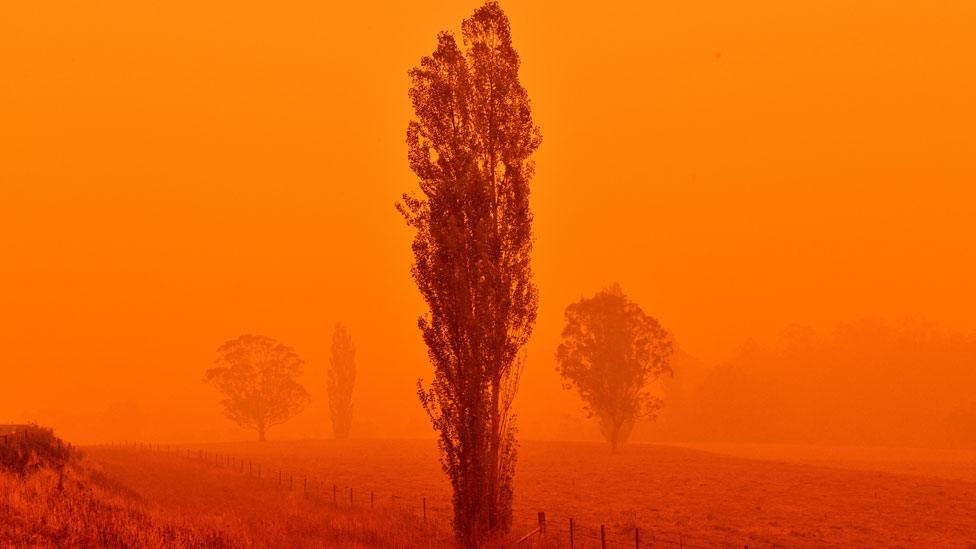
- Published9 January 2020
